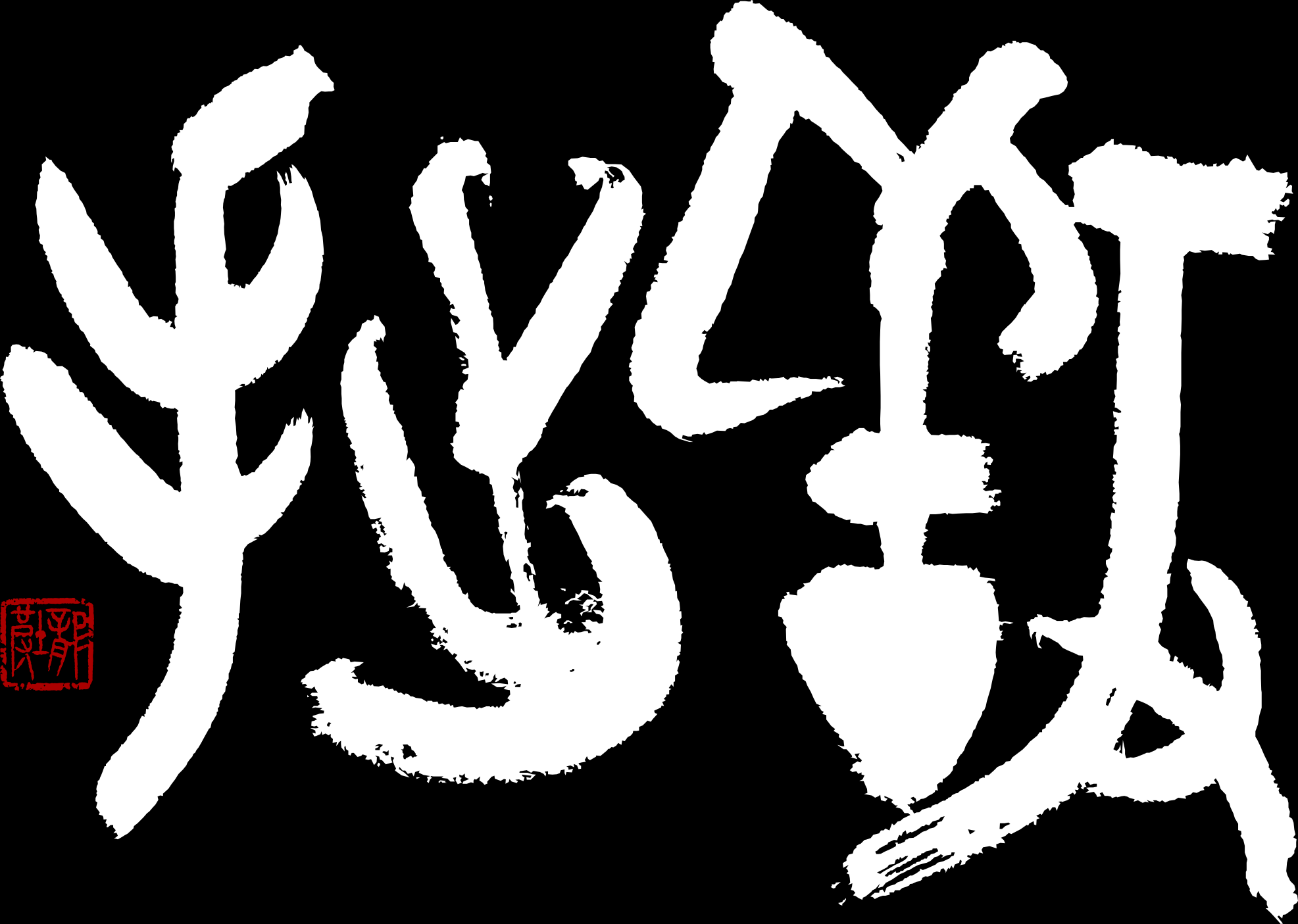| Get Ready! | Listen to the Japanese repeatedly and practice until you can say it smoothly. |
| ① | Repeat each question and answer three times. |
| ② | Your teacher will ask you the questions. Give your own answers. |
| ③ | Ask your teacher the questions and listen to their answers. |
| Pay special attention to the keywords. |
| 031 |  |
| 好き | |
| すき | |
| Question 🔊 | Model answer 🔊 |
|
表示 ▶
漢: あなたは音楽が好きですか? 漢: はい。音楽が好きです。 |
|
| 032 | 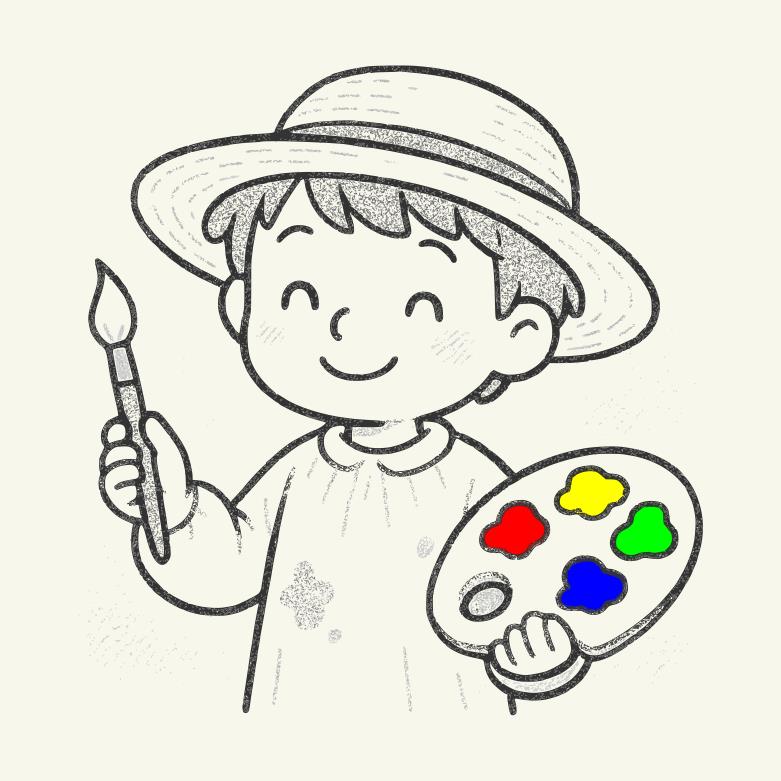 |
| 何 | |
| なん | |
| Question 🔊 | Model answer 🔊 |
|
表示 ▶
漢: 何の色が一番好きですか? 漢: 水色と緑が一番好きです。 |
|
| 033 | 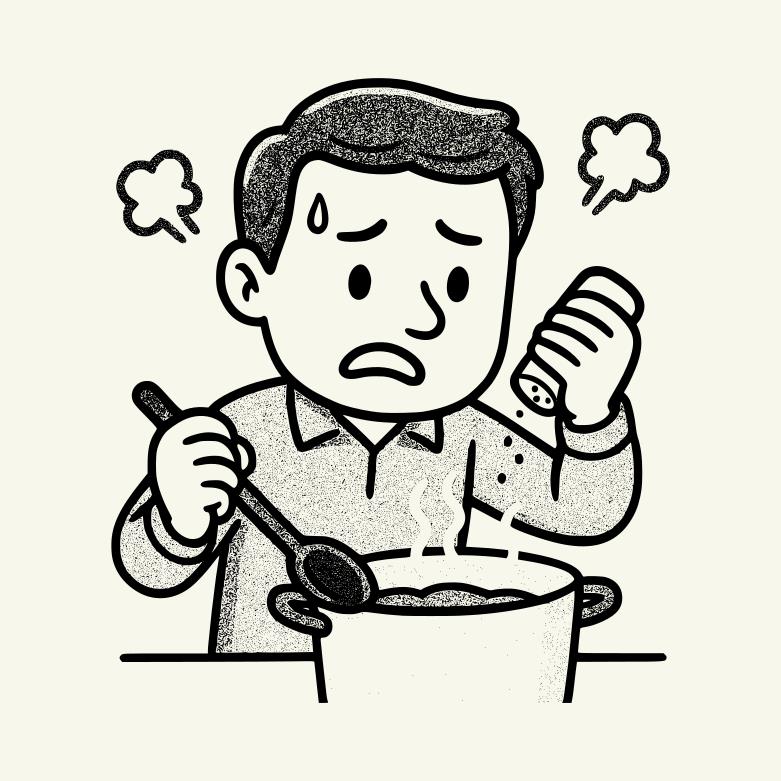 |
| できます | |
| できます | |
| Question 🔊 | Model answer 🔊 |
|
表示 ▶
漢: あなたは料理ができますか? 漢: いいえ。料理ができません。 |
|
| 034 | 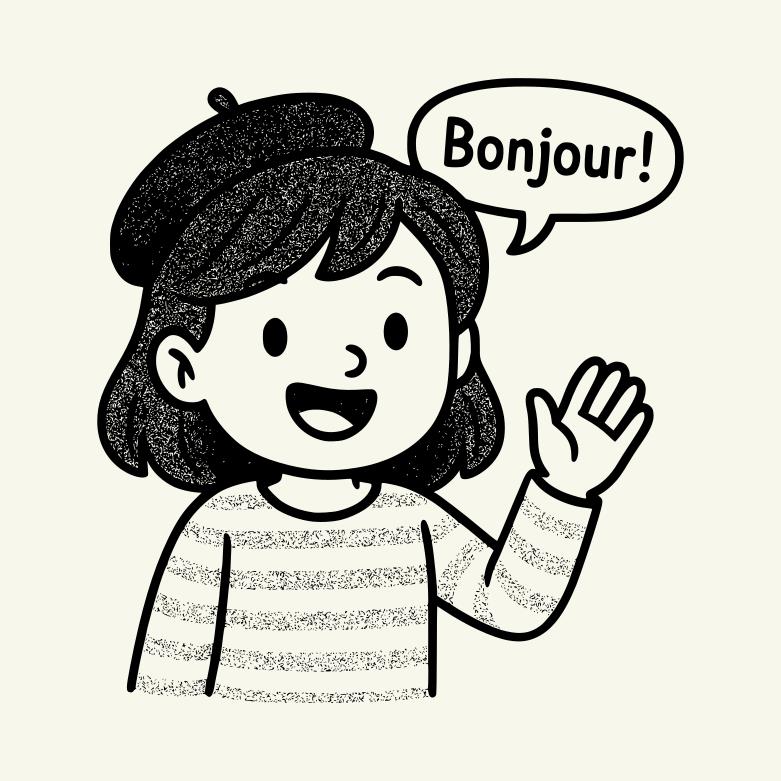 |
| 話せます | |
| はなせます | |
| Question 🔊 | Model answer 🔊 |
|
表示 ▶
漢: フランス語が話せますか? 漢: いいえ。フランス語が話せません。 |
|
| 035 |  |
| あなた | |
| あなた | |
| Question 🔊 | Model answer 🔊 |
|
表示 ▶
漢: あなたは中国人ですか? 漢: いいえ。私は日本人です。 |
|
| 036 | 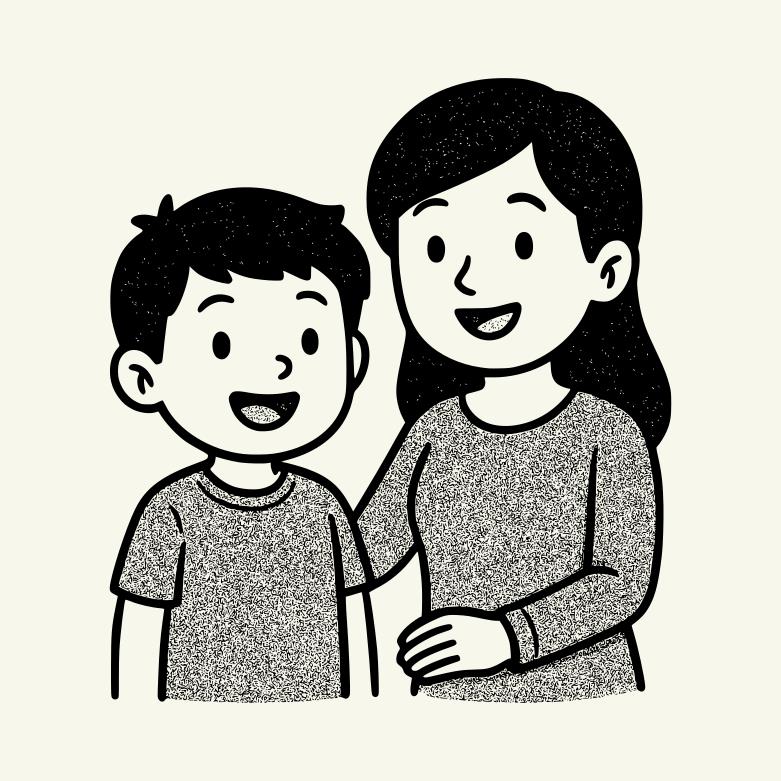 |
| 何 | |
| なん | |
| Question 🔊 | Model answer 🔊 |
|
表示 ▶
漢: あなたのお母さんの名前は何ですか? 漢: お母さんの名前はユキコです。 |
|
| 037 | 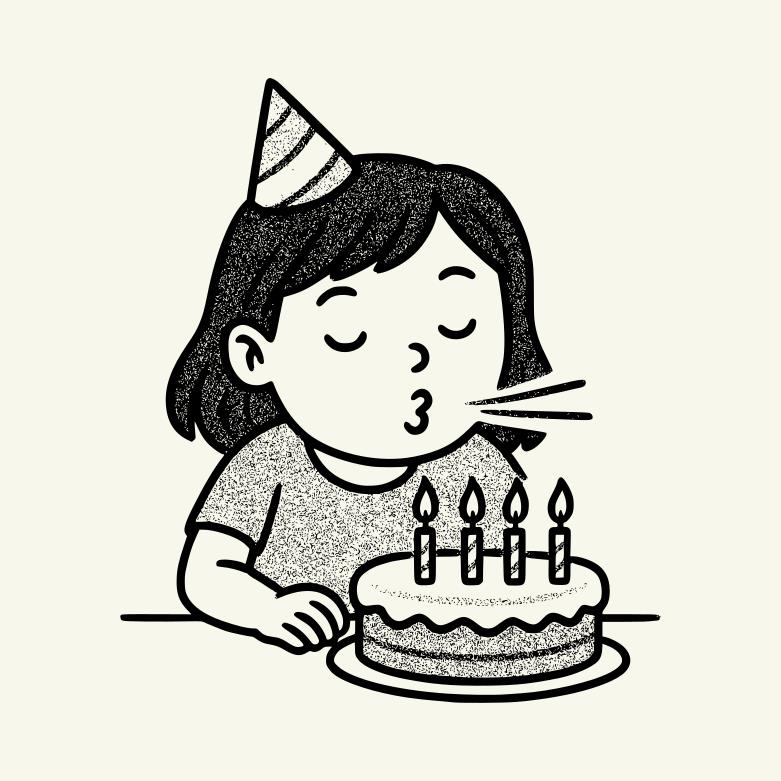 |
| いくつ | |
| いくつ | |
| Question 🔊 | Model answer 🔊 |
|
表示 ▶
漢: あなたの妹はいくつですか? 漢: 17歳です。 |
|
| 038 |  |
| 何時 | |
| なんじ | |
| Question 🔊 | Model answer 🔊 |
|
表示 ▶
漢: 毎日、何時に寝ますか? 漢: 10時に寝ます。 |
|
| 039 |  |
| ~ています | |
| ~て います | |
| Question 🔊 | Model answer 🔊 |
|
表示 ▶
漢: のどがかわいていますか? 漢: はい。かわいています。 |
|
| 040 |  |
| 何時 | |
| なんじ | |
| Question 🔊 | Model answer 🔊 |
|
表示 ▶
漢: 毎日、何時に起きますか? 漢: 毎日、6時半に起きます。 |
|
| Activity | Guess the question – part 1 |
| ① | Your teacher will say their own answers. Try to guess the questions. |
| ② | How many can you guess correctly in 30 seconds? |
| 031 |  |
| 好き | |
| すき |
| 032 |  |
| 何 | |
| なん |
| 033 |  |
| できます | |
| できます |
| 034 |  |
| 話せます | |
| はなせます |
| 035 |  |
| あなた | |
| あなた |
| 036 |  |
| 何 | |
| なん |
| 037 |  |
| いくつ | |
| いくつ |
| 038 |  |
| 何時 | |
| なんじ |
| 039 |  |
| ~ています | |
| ~て います |
| 040 |  |
| 何時 | |
| なんじ |
|
Timer
30
|
|
Counter
0
|
| Activity | Guess the question – part 2 |
| ① | Now say your own answers. Your teacher will try to guess the questions. |
| ② | How many can you guess correctly in 30 seconds? |
| Listen In | Listen to the dialogue and answer the following questions. |
| ① | Can this person cook? |
| ② | What time does this person go to bed every day? |
| ③ | What time does this person get up every day? |
| Fill In ① | Use hiragana to fill in the missing words in the questions and your own answers. |
| Q031 | あなた は [ ] が [ ] です か? |
| A031 | [ ]。おんがく が すき [ ]。 |
| Q032 | なん の いろ が [ ] [ ] です か? |
| A032 | [ ] が いちばん すき です。 |
| Q033 | あなた [ ] りょうり [ ] できます か? |
| A033 | [ ]。りょうり が [ ]。 |
| Q034 | [ ] が はなせます か? |
| A034 | [ ]。ふらんす-ご が [ ]。 |
| Q035 | [ ] は ちゅうごく-じん です [ ]? |
| A035 | [ ]。わたし は [ ] です。 |
| Q036 | あなた の [ ] の なまえ [ ] なん [ ] か? |
| A036 | おかあさん [ ] なまえ は [ ] です。 |
| Q037 | あなた の いもうと [ ] いくつ [ ] か? |
| A037 | [ ] です。/いもうとう が [ ]。 |
| Q038 | まいにち、[ ] に [ ] か? |
| A038 | [ ] に ねます。 |
| Q039 | のど が [ ] います か? |
| A039 | [ ]。かわいて [ ]。 |
| Q040 | [ ]、なんじ に おきます [ ]? |
| A040 | まいにち、[ ] に [ ]。 |
| Fill In ② | Now do the same using kanji, etc. |
| Q031 | あなたは [ ] が [ ] ですか? |
| A031 | [ ]。音楽が好き[ ]。 |
| Q032 | 何の色が [ ] [ ] ですか? |
| A032 | [ ] が一番好きです。 |
| Q033 | あなた [ ] 料理 [ ] できますか? |
| A033 | [ ]。料理が[ ]。 |
| Q034 | [ ] が話せますか? |
| A034 | [ ]。フランス語が [ ]。 |
| Q035 | [ ] は中国人です [ ]? |
| A035 | [ ]。私は [ ] です。 |
| Q036 | あなたの [ ] の名前 [ ] 何 [ ] か? |
| A036 | お母さん [ ] 名前は [ ] です。 |
| Q037 | あなたの妹 [ ] いくつ [ ] か? |
| A037 | [ ] です。/妹が [ ]。 |
| Q038 | 毎日、[ ] に [ ] か? |
| A038 | [ ] に寝ます。 |
| Q039 | のどが [ ] いますか? |
| A039 | [ ]。かわいて [ ]。 |
| Q040 | [ ]、何時に起きます[ ]? |
| A040 | 毎日、[ ] に [ ]。 |
| Zoom In | Substitute the words and talk about these topics. |
| Topic 1 | 調子・ちょうし・chō·shi = Condition |
| 039 |  |
| ~ています | |
| ~て います | |
| Question 🔊 | Model answer 🔊 |
| Question pattern |
| のどがかわいて いますか ? |
| のど が かわいて います か ? |
| Answer pattern 1 |
| はい。のどがかわいて います。 |
| はい。のど が かわいて います。 |
| Answer pattern 2 |
| いいえ。のどがかわいて いません。 |
| いいえ。のど が かわいて いません。 |
| Variant |
| いや、あまり のどがかわいて いません。 |
| いや、あまり のど が かわいて いません。 |
| Vocabulary | ||
| 1 | のどがかわいて・のど が かわいて = thirsty | 挿入 |
| 2 | 腹が空いて・なか が すいて = hungry | 挿入 |
| 3 | 元気にして・げんき に して = well | 挿入 |
| 4 | ワクワクして・わくわく して = excited | 挿入 |
| 5 | ドキドキして・どきどき して = nervous | 挿入 |
| 6 | イライラして・いらいら して = annoyed | 挿入 |
| 7 | 疲れて・つかれて = tired | 挿入 |
| 8 | ガッカリして・がっかり して = disappointed | 挿入 |
| 9 | 怒って・おこって = angry | 挿入 |
| 10 | ホッとして・ほっと して = relieved | 挿入 |
|
Timer
|
30
|
|
|
Counter
|
0
|
| Notes | There are two important things to notice in the above examples. First, in Japanese, the present continuous/progressive (“am/is/are doi-ng ~”) is used not only to describe what you are doing but also often to describe how you are feeling.
The present continuous is made by combining the -て・-te form of a verb with います・i·ma·su. Past, present negative, and past negative continuous forms can be made by changing います・i·ma·su to いました・i·ma·shi·ta, いません・i·ma·se·n, and いませんでした・i·ma·se·n·de·shi·ta respectively. The tricky part is remembering how to make the -て・-te form of verbs. The easiest are what are known as the Group II or Ichidan Verbs. For these, we simply remove the ます・ma·su from the end of the verb and add て・te. Here are some examples of Group II or Ichidan Verbs. 食べます・たべます・ta·be·ma·su → 食べて・たべて・ta·be·te = to eat The largest group of verbs, though, is the Group I or Godan Verbs. For these, the way the -て・-te form is made depends on the syllable before ます・ma·su. Syllable before ます・ma·su is い・i or ち・chi or り・ri Syllable before ます・ma·su is び・bi or み・mi or に・ni Syllable before ます・ma·su is き・ki Syllable before ます・ma·su is ぎ・gi Syllable before ます・ma·su is し・shi There are some irregular verbs which follow their own rules. For these, you’ll just have to remember the corresponding -て・-te forms of the verbs. There are exceptions, of course, in which we can state how we are feeling using the present simple. Here are some examples. 幸せです。・しあわせです。・shi·a·wa·se de·su。 = I’m happy. The second thing to notice is that there are a lot of する・su·ru verbs in Japanese! However, this makes learning the language easy because many nouns can be used as verbs (just as we do in English, e.g. “record” can be both a noun or a verb in English, although the pronunciation of each is different). For example, 記録・きろく・ki·ro·ku is the Japanese noun for “record”. We can make this into the verb “record/make a record/take a record” by adding する・su·ru. ボッブは日付を記録しました。 |
| Topic 2 | 日課・にっか・ni·kka = Daily routine |
| 040 |  |
| 何時 | |
| なんじ | |
| Question 🔊 | Model answer 🔊 |
| Question pattern |
| 毎日、何時に 起きます か? |
| まいにち、なんじ に おきます か? |
| Answer pattern 1 |
| 毎日、??? に 起きます。 |
| まいにち、??? に おきます。 |
| Answer pattern 2 |
| 毎日、違う時間に 起きます。 |
| まいにち、ちがう じかん に おきます。 |
| Variant |
| いや、あまり 起きません。 |
| いや、あまり おきません。 |
| Vocabulary | ||
| 1 | 起き・おき = wake up | 挿入 |
| 2 | 朝食を食べ・ちょうしょく を たべ = eat breakfast | 挿入 |
| 3 | シャワーを浴び・しゃわー を あび = have a shower | 挿入 |
| 4 | 新聞を読み・しんぶん を よみ = read a/the newspaper | 挿入 |
| 5 | 出かけ・でかけ = go out | 挿入 |
| 6 | 休憩を取り・きゅうけい を とり = take a break | 挿入 |
| 7 | うちに帰り・うち に かえり = get home | 挿入 |
| 8 | 夕飯を作り・ゆうはん を つくり = make dinner | 挿入 |
| 9 | くつろぎ・くつろぎ = relax | 挿入 |
| 10 | 寝・ね = go to sleep | 挿入 |
|
Timer
|
30
|
|
|
Counter
|
0
|
| Notes | One of the most common of the various particles which are used in Japanese is に・ni. This particle has several uses.
① In expressions about time
② In expressions about places
*In this case, the particle で・de could also be used. ③ In expressions about purposes (“for”)
***In this case, the phrase と して・to shi·te could also be used. ④ With the verb なります・na·ri·ma·su to indicate changes
⑤ With the verb します・shi·ma·su to indicate decisions or actions
⑥ With -な・-na adjectives or nouns to make adverbs
|
| Talk More Technique | ④ Echo |
| え?~ですか? |  |
| え? ~ です か? | |
| 🔊 | |
| Oh, ~ ? |
| ~か? |  |
| ~ か? | |
| 🔊 | |
| ~ ? |
| Sample Dialog | |||
| A: | 来月、中国に行きますよ。 | A: | らいげつ、ちゅうごく に いきます よ。 |
| B: | え?中国ですか? | B: | え? ちゅうごく です か? |
| A: | はい。いとこが上海に住んでいます。 | A: | はい。いとこ が しゃんはい に すんで います。 |
| B: | 上海に住んでいますか?すごい! | B: | しゃんはい に すんで います か? すごい! |
| Talk Longer | Use the questions in this unit, the patterns in the Zoom In section, and the Talk More Technique to have a longer conversation with your teacher. |
| 好き |  |
| すき |
| 何 |  |
| なん |
| できます |  |
| できます |
| 話せます |  |
| はなせます |
| あなた |  |
| あなた |
| 何 |  |
| なん |
| いくつ |  |
| いくつ |
| 何時 |  |
| なんじ |
| ~ています |  |
| ~て います |
| 何時 |  |
| なんじ |
| え?~ですか? |  |
| え? ~ です か? |
| ~か? |  |
| ~ か? |
|
Timer
|
2:00
|
|
|
|
| Write Up | Use the questions and answer patterns in this unit to write about your teacher. |
| ① | Make notes of your teacher’s answers to the questions in this unit. |
| ② | Then, try to write the full sentences using kanji, etc. |
| Subject | he ~ : | 彼は~・かれ は~・ka·re wa ~ | ||
| she ~ : | 彼女は~・かのじょ は~・ka·no·jo wa ~ | |||
| Possessive adjective | his ~ : | 彼の~・かれ の~・ka·re no ~ | ||
| her ~ : | 彼女の~・かのじょ の~・ka·no·jo no ~ |
| Q031 | |
| Notes: | [ ] おんがく が すき [ ]。 |
| In kanji, etc: | |
| Q032 | |
| Notes: | [ ] が いちばん すき です。 |
| In kanji, etc: | |
| Q033 | |
| Notes: | [ ] りょうり が [ ]。 |
| In kanji, etc: | |
| Q034 | |
| Notes: | [ ] ふらんす-ご が [ ]。 |
| In kanji, etc: | |
| Q035 | |
| Notes: | [ ] ちゅうごく-じん [ ]。 |
| In kanji, etc: | |
| Q036 | |
| Notes: | [ ] おかあさん の なまえ は [ ] です。 |
| In kanji, etc: | |
| Q037 | |
| Notes: | [ ] いもうと は [ ]-さい です。 |
| In kanji, etc: | |
| Q038 | |
| Notes: | まいにち、[ ] [ ] に ねます。 |
| In kanji, etc: | |
| Q039 | |
| Notes: | [ ] のど が かわいて [ ]。 |
| In kanji, etc: | |
| Q040 | |
| Notes: | まいにち、[ ] [ ] に おきます。 |
| In kanji, etc: |
